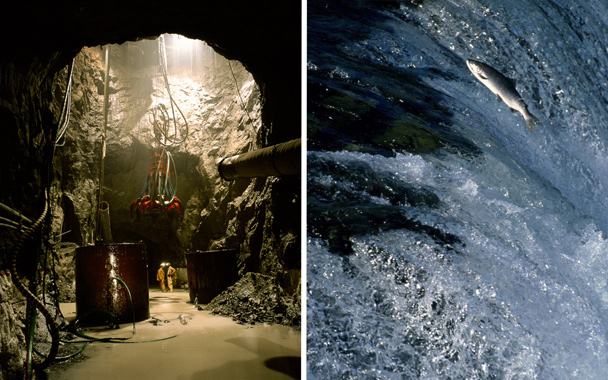Much of what follows will be bad news, so let’s begin on an uplifting note: Wild salmon from Alaska is one of the most sustainable seafood choices you can make.
But make it while you still can.
Three commercial fishermen, from California, Washington, and Alaska discussed the state of West Coast salmon at the Seafood Summit last weekend in San Diego. The situation is grim, to say the least. As it was last year, the commercial salmon fishery south of the Canadian border will be closed in 2009. The cause is not over-fishing, but the failure of young salmon to survive long enough to leave their natal streams and enter the ocean.
In California’s Sacramento River in 2007, for instance, only 2 percent of the juveniles that hatched made it as far as the Golden Gate Bridge. The others were killed by the pesticides, nitrogen, and herbicides in agricultural runoff, according to commercial salmon fisherman Duncan MacLean, of El Grenada, CA. Saying that it’s been years since he’s seen any small salmon off shore, MacLean wonders whether he will ever be able to go fishing again. In 2005, one million salmon ran up the Sacramento. Now the population faces total collapse. And in northern California’s Klamath River, the problem of agricultural chemicals is exacerbated because so much water is drawn off and lost to evaporation in inefficient irrigation systems.
Joel Kawahara, a commercial fisherman from Washington, said that the biggest villains in the Columbia River basin are four dams that span the Snake River and prevent migrating salmon from accessing thousands of square miles of pristine wilderness breeding grounds. The Columbia was once the West’s premier salmon river. Today, the population hovers at 3 percent of former levels.
In Alaska, salmon populations in Bristol Bay, the world’s largest sockeye fishery, remain strong and well managed. In part that is because the entire watershed that feeds into the bay is uninhabited wilderness. The threat there is Pebble Mine, a proposed gold and copper operation near Iliamna Lake at the headwaters of the bay. The fear, according to Lindsey Bloom, who fishes in the bay, is that arsenic and other toxic pollutants from the massive would-be-mine could seep into the lake and kill migrating salmon. The project took a big step toward realization last summer when Alaska Governor Sarah Palin voiced strong support for it, despite the importance of salmon (a completely renewable resource) to the state’s economy.
A single cause links all the salmon problems. Politicians have chosen to bow to the wishes of large agricultural interests and multi-national mining corporations rather than to maintain a healthy salmon population. But maybe there’s hope. Referencing President Obama’s inauguration speech, Kawahara said, “All we ask is that he makes sure officials and agencies let science triumph over politics.”
That would be change indeed.


